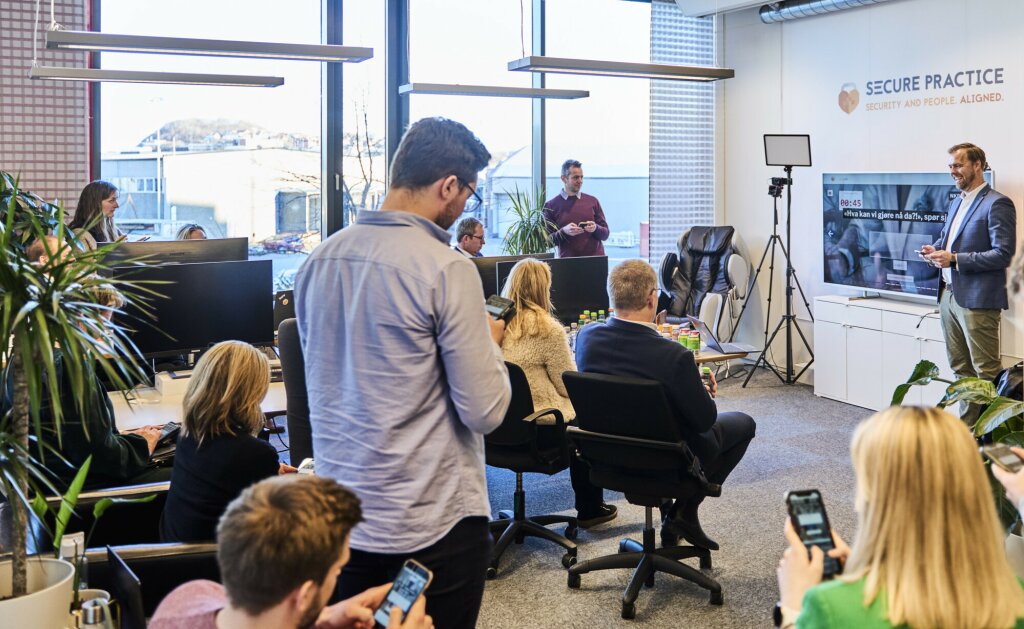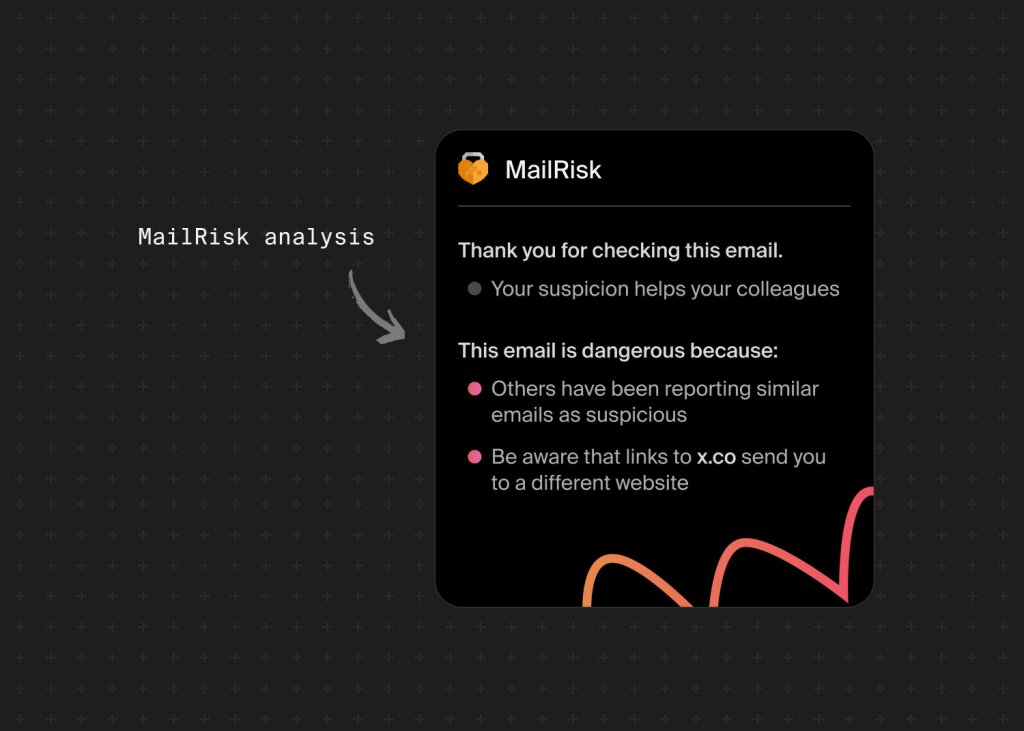Are humans the biggest threat to cybersecurity? Absolutely—but not in the way you might think.
The real danger isn’t careless colleagues or innocent mistakes; it’s the basic human urge to exploit opportunities for quick gains with minimal effort, no matter the consequences. In the digital world, that often leads straight to cybercrime.
These malicious actors know exactly how to turn our natural instincts against us. Thanks to technology, they’ve found new ways to exploit the human threat in cybersecurity, targeting billions in a way that’s as effortless for them as it is devastating for us.
But cybercriminals aren’t some futuristic villains—they’re just people, like you and me. Sure, they’re driven by greed and the appeal of an easy score, but their human nature is exactly what makes them vulnerable to our best defenses. That’s right, we’re flipping the script.
This two-part series explores why humans are both the challenge and the solution in cybersecurity. Instead of trying (and failing) to turn people into perfect security robots, we focus on working with our human nature to understand how attackers exploit psychology, and what actually works to turn this around.
Humans: the Achilles’ heel and the saving grace of cybersecurity
When people talk about the human threat in cybersecurity, the image that often comes to mind is a well-meaning colleague who accidentally clicks the wrong link or falls for a convincing phishing scam. Whether it’s an employee, a contractor, or a partner, one small mistake or a moment of carelessness can indeed open the door for a cyberattack to wreak havoc.
And while it's true that humans make mistakes—it's part of being, well, human—the real threat isn't the ones who fall victim. It's the humans who deliberately exploit their weaknesses.
Why people keep saying we’re the weakest link
For too long, the blame and responsibility for cyberattacks have been placed squarely on the victims, instead of the perpetrators. Yes, 90% of breaches boil down to human error, but not because we’re inherently flawed or negligent. It’s because cybercriminals are masters of deception, using sophisticated tactics to manipulate even the most cautious among us.
In fact, the way we talk about cybersecurity often sets us up to feel responsible for failures that are actually the result of highly orchestrated schemes.
The term "human vulnerability" itself is misleading. It suggests that the weakness lies within us, as individuals, when in reality, it’s the attackers who are adept at exploiting our natural behaviors and instincts.
I hope this threat finds you well…
Think about how phishing emails are designed to look legitimate, often mimicking trusted sources and urgent requests that compel us to act quickly without second-guessing.
These aren’t random mistakes – they’re calculated moves by professionals who understand human psychology inside and out.
This shift in perspective is crucial because it moves us away from blaming the user for falling into a well-crafted trap and towards focusing on how we can better protect them from these traps in the first place.
Villains and heroes of the same story
Here’s where it gets interesting: while we might be the ones making the mess, we’re also the best shot at cleaning it up.
Let’s go back to that phishing email—maybe one person clicks the link, but another spots something off and reports it. That report might be what saves the entire company from a data breach.
Reddit’s 2023 breach is a perfect example: a phishing attack exposed data, but one employee’s quick alert to the security team kept the damage under control. Their fast response was crucial in preventing a bigger disaster.
Our human traits—like creativity, quick thinking, and collaboration—are exactly what cybercriminals exploit. But these are also the traits that empower us to fight back. And while cyber threats are evolving, so are our defenses. At the heart of both the problem and the solution is us—flawed, yes, but also capable of incredible resilience and ingenuity.
Cybercrime: the dark side of human nature
Just like security awareness, cybercrime isn’t only about coding or hacking—it’s about understanding people. Whether it’s the email that looks just official enough to trick you into clicking, or the urgent message that convinces you to act fast without thinking, these tactics aren’t about sophisticated technology. They’re about exploiting the very traits that make us human, like curiosity, fear, urgency, laziness, and greed.
- Curiosity
-
A phishing email with a subject like “You won’t believe this!” prompts the recipient to click a malicious link our of sheer curiosity.
- Fear
-
A scam email claims that your bank account has been compromised, pressuring you to enter personal details to “secure” it.
- Urgency
-
A fraudulent message demands immediate action, like “Your account will be locked in 24 hours unless you verify your identity now.”
- Laziness
-
A cybercriminal sends a convincing but fake password reset email, knowing you might reuse an old, weak password out of convenience.
- Greed
-
A phishing attempt offers a fake financial windfall, like “You’ve won $10,000! Click here to claim your prize,” to lure in victims.
Most of us are juggling countless tasks, like endlessly sending and receiving links between strangers and automated notifications from a myriad of SaaS apps that spoof important-sounding mailboxes. It’s just assumed you know you’re supposed to open stuff—and do it fast!
The reality is, if we stopped clicking on these links, things would grind to a halt. Maybe Jack’s vacation doesn’t get approved, or that crucial purchase order slips through the cracks. It’s a tightrope act, and cybercriminals know exactly how to shake the wire. It’s not because you’re careless; it’s because the attacker knew how to create that perfect storm of urgency and trust.
And it’s not just phishing. Think of which security threat is considered a human error, and you find that social engineering, insider threats, and other dirty tricks all rely on exploiting our human nature and our willingness to trust and be helpful.
What we’re getting wrong in cybersecurity (and why it’s not helping)
In cybersecurity, we come up with brilliant solutions to hard problems, tackle risks that would make anyone anxious, and achieve technological feats nobody thought possible. But we also set impossible expectations for users, assume complex systems will never fail, and criticize those who build them when they can't fend off every threat.
So when it comes to security incidents, we’re still treating the symptoms, not the cause. We blame, shame, and re-train. We do that because fixing the real problem is really hard. It breaks a bunch of existing stuff and costs people money.
Let go of the old
- Blame
-
Criticising your colleagues
- Shame
-
Offering public criticism
- Re-train
-
Sending them to generic training
Embrace the new
- Root cause analysis
-
Fixing systemic issues
- Supportive learning environment
-
Using mistakes as learning opportunities
- Targeted solutions
-
Customised training and system improvements
Much of what we're getting wrong in cybersecurity boils down to how we perceive and handle mistakes. Our focus often leans too heavily on flashy technology, dull training, and a harsh punishment mindset. But these approaches don’t tackle the real issue: human behavior.
1. Overreliance on tech
No matter how advanced security software becomes, it can’t entirely shield us from human error. The shiny new firewall, the cutting-edge intrusion detection system—these are all valuable tools, but they only address part of the equation.
Think about it. The very tools we use to enhance our productivity and connectivity—email, social media, cloud storage—become vectors for attacks by malicious actors. When we rely solely on technology to protect us, we overlook the fact that our own actions can create vulnerabilities. The problem isn’t just the tech; it’s how we use it, and sometimes, how we mismanage it.
- How your colleagues use it
-
To communicate and collaborate with colleagues and customers.
- How cybercriminals use it
-
To distribute malicious links designed to trick the reader into:
Clicking on links that spread malware
Typing confidential information into a fake website
Making a payment to an attacker-controlled account
Open an infected document
Cloud storage
- How your colleagues use it
-
To store and share files securely with team members, clients, and stakeholders.
- How cybercriminals use it
-
To:
Distribute malware or ransomware by embedding malicious files in shared folders
Attempt to access confidential files by exploiting weak passwords or using phishing tactics to gain login credentials
Messaging app
- How your colleagues use it
-
To quickly communicate with team members, share updates, files, and collaborate on projects in real time.
- How cybercriminals use it
-
To:
Launch phishing attacks by impersonating a trusted colleague or company to trick employees into sharing sensitive information or clicking on malicious links
Spread malware through file-sharing features
Spreadsheets
- How your colleagues use it
-
To organize, analyze, and share data for business processes such as budgeting, sales forecasting, and project management.
- How cybercriminals use it
-
To:
Embed malicious macros or scripts in spreadsheets that execute harmful code when opened
Create fraudulent spreadsheets to manipulate data or trick users into providing sensitive information
2. Dull, ineffective training
Traditional cybersecurity training modules are about as engaging as watching paint dry. These sessions often consist of lengthy, monotonous presentations that barely keep us interested for more than a few minutes. No wonder people aren’t paying attention or forgetting 90% of it.
Effective training should be engaging and relevant. Instead, many organizations haven’t moved on from a "one-size-fits-all" approach that treats cybersecurity training like a checkbox to tick off. This not only wastes time but also fails to address the real-world scenarios people face at work—like identifying spear phishing attempts, securing sensitive data while working remotely, or recognizing insider threats.
School of phishes
Phishing encompasses all the nasty attempts that arrive in your email inbox.
Spear phishing is where the threat actor is deliberately attacking a specific person and has crafted an email containing personal information to make them click.
Regardless of the type of phish, you’ll still need multiple layers of defence to protect your organisation.
3. The punishment approach
At first glance, punishing people for slip-ups seems like it might drive better security practices. But in reality, this strategy often backfires.
Punishment creates a culture of fear, guilt, and doubt. It can lead to learned helplessness, making people believe they are victims of their circumstances and, therefore, have no control over their situation.
If cyberattacks work because they exploit the very nature of what makes humans tick, then why punish people for being human?
Making employees feel like they’re going to get in trouble for making mistakes is a surefire way to keep them from reporting anything. And when your colleagues don’t report mistakes, their silence turns small issues into big breaches.
What actually works: turning people into agents of change
As cybersecurity professionals, we need to:
Reach out and listen to those who don't share our expertise.
Stop pointing fingers at less tech-savvy individuals when issues arise.
Focus on building practical solutions that work for most people, most of the time, rather than just what's easy or shiny.
Step into our users' shoes and rethink whether our demands are fair.
We’re not quite there yet.
Instead of focusing on the mistakes people make, we need to shift the conversation to how we can outsmart the attackers. This means better training, yes, but also better support systems, clearer communication, and a workplace culture that understands the pressures people are under.
What’s broken vs. what works: a side-by-side lookWhy it works
Boring, one-size-fits-all training
- Why it fails
-
People zone out, and nothing sticks.
- What works
-
Tailored, interactive training
- Why it works
-
It’s relevant to their work, so people actually pay attention.
- Real-world wins
-
Companies see a drop in successful phishing attacks after switching to interactive training.
Punishing mistakes
- Why it fails
-
Creates fear, so people hide their errors.
- What works
-
Encouraging openness
- Why it works
-
People report issues faster, so you can fix them before they blow up.
- Real-world wins
-
Increased threat detection when employees feel safe to report errors.
Thinking tech can do it all
- Why it fails
-
Tech misses the human factor.
- What works
-
Combining tech with human smarts
- Why it works
-
Humans catch what tech misses, like tricky social engineering.
- Real-world wins
-
People, process, and technologysupport each other in finding and fixing vulnerabilities that tools overlook.
Sporadic training sessions
- Why it fails
-
People forget what they’ve learned.
- What works
-
Frequent, bite-sized learning
- Why it works
-
Keeps security top-of-mind without being overwhelming.
- Real-world wins
-
Micro-learning boosts security awareness with sustained improvement in security behavior.
No easy way to report issues
- Why it fails
-
Delays in reporting give threats time to spread.
- What works
-
Simple, anonymous reporting
- Why it works
-
Quick, fear-free reporting stops problems early.
- Real-world wins
-
Anonymous, easy-to-use reporting tools lead to quicker responses to potential threats.
Playing to our strengths
Cyberattacks are most effective when they’re based on human psychology—and so are our defenses. When we know how people think and act, we can create security practices that align with human nature, not fight against it.
Time after time, studies have shown that people learn better when content is relevant to their work and that tailoring security training to fit into users’ existing habits reduces risks. They’re curious but busy—they need measures that address their unique challenges, and deliver content specific to their roles, profiles, and awareness levels.
Engaging training that activates their built-in superpowers
The right tools and knowledge are more likely to empower your colleagues to detect, report, and become active participants in security.
Training sessions that mirror real-world challenges—like simulations or gamification—improve security behaviors and nudge people to apply what they’ve learned. They’re not going to change core human behaviors—after all, tricks are designed to trick us—but they make it easier for people to spot and report suspicious activities.
Just like experts see themselves as defenders against cyber threats, engaging training helps your colleagues view themselves as crucial protectors of their organization. When they learn to spot phishing emails or use strong passwords through fun simulations, they’re not just following rules—they start feeling like security heroes who are ready to tackle any threat that comes their way.
Self-confidence over shame and guilt
Creating a security-first culture means shifting from punishment to positive reinforcement. If we want employees to report problems, we need to make it easy and rewarding, not intimidating.
A supportive environment encourages employees to speak up when they spot something wrong, without the fear of punishment hanging over their heads. This way, you turn mistakes into learning opportunities, building a stronger, more resilient security culture.
A real-world example involves German software developer Andres Freund who discovered that the open-source XZ Utils software had been deliberately sabotaged by a rogue developer. This could have created a covert entry point to millions of servers globally, potentially leading to a massive security crisis. Fortunately, Freund’s vigilance and the support from his organization allowed him to report this issue before the compromised version was widely deployed.
We've just scratched the surface of why humans are both a significant challenge and an invaluable asset in cybersecurity.
In Part 2, we dive deeper into practical techniques for managing human risk effectively while maintaining trust and enthusiasm. You’ll learn how to embed security into the fabric of daily operations and use tools that make security a natural part of your team’s routine.
Human risk management, emphasis on “human”
Explore how you can help your colleagues avoid and report threats from real human attackers with Secure Practice.



